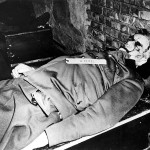There were many painful and disturbing legacies that countries had to face after the end of World War II. The most obvious is Germany. France had its own demons to deal with concerning Vichy France and its collaboration with the Nazis (France was the only Allied country to collaborate with the Germans). It wasn’t until 16 July 1995 that the French President Jacques Chirac publically acknowledged and accepted responsibility for France’s collaborationist role.

Recently, Japan has apologized to Korea for its role in “recruiting” women to serve in brothels set up for its soldiers during World War II. These women have been called “Comfort Women” and no agreement has ever been reached as to whether they were kidnapped or volunteered. One thing most historians agree on is that once in the brothels, the women were not allowed to leave. I suppose that in the strictest sense, this meant these women were sex slaves. Read More Comfort Women

